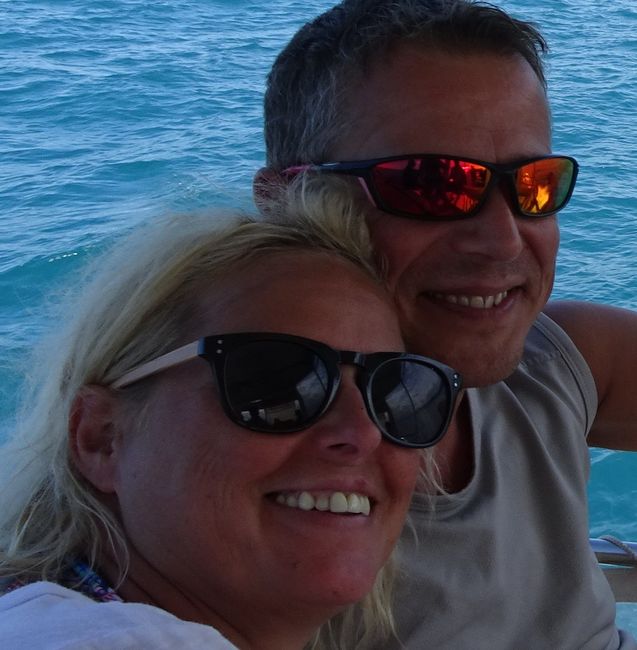
Dibbeldabbeldour-Südsee-Teil 2
vakantio.de/dibbeldabbeldour-suedsee-teil-zwei
27.-30.05.2019 # Java / Jakarta
Objavljeno: 03.06.2019
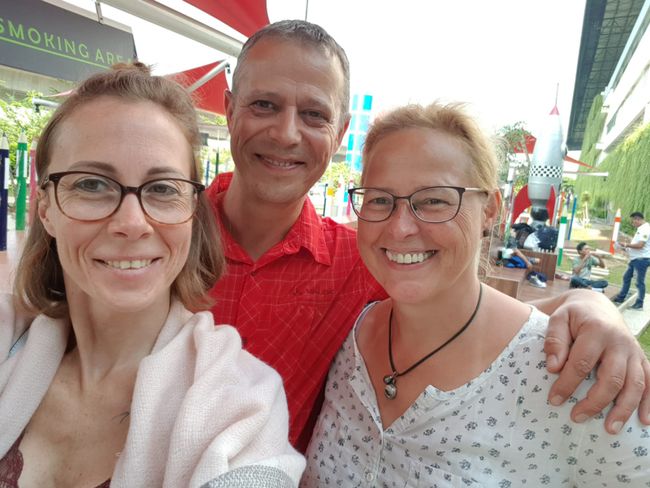
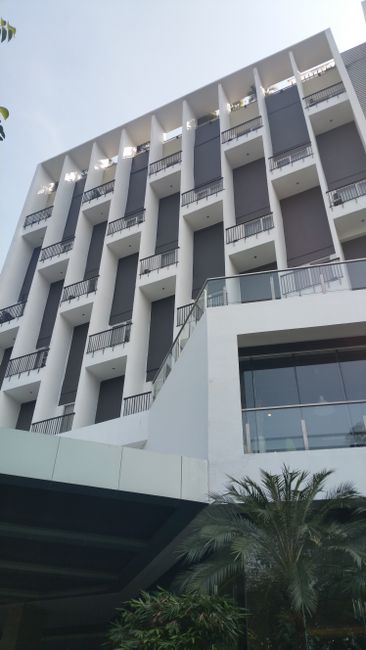
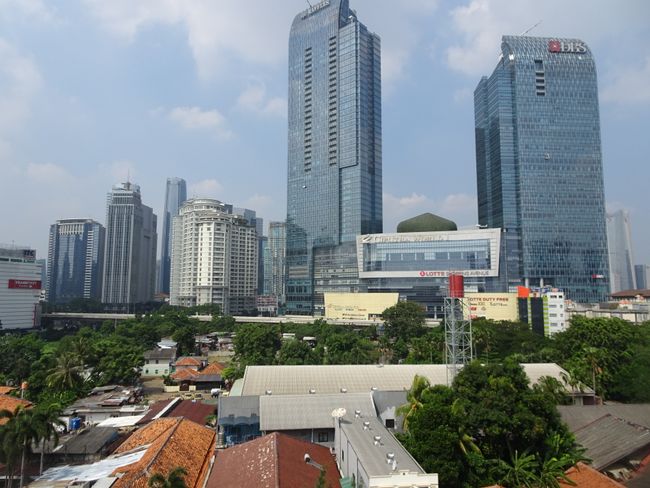
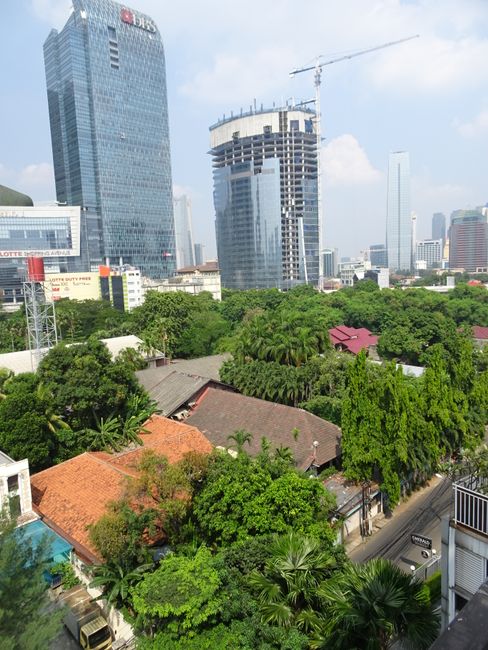
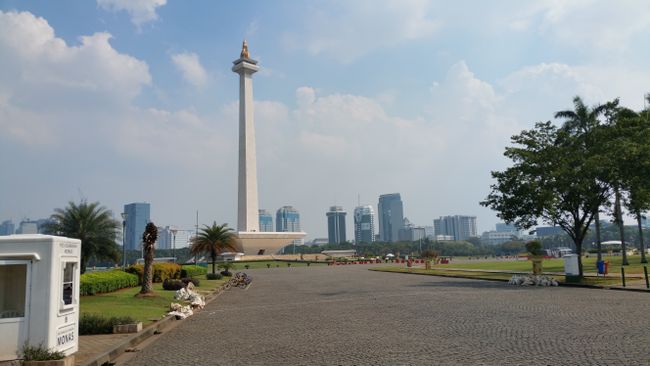
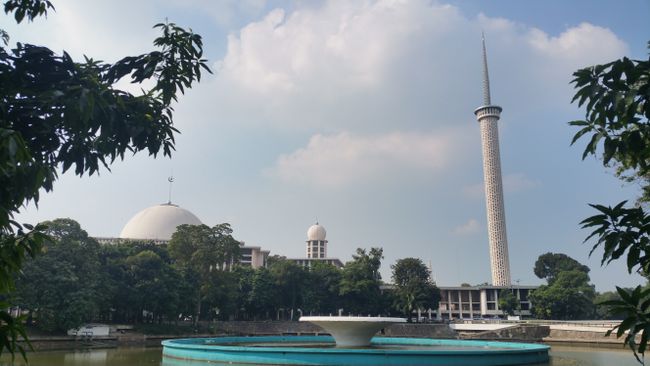
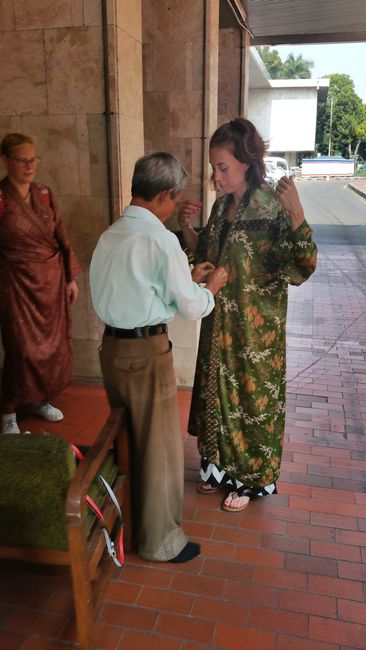
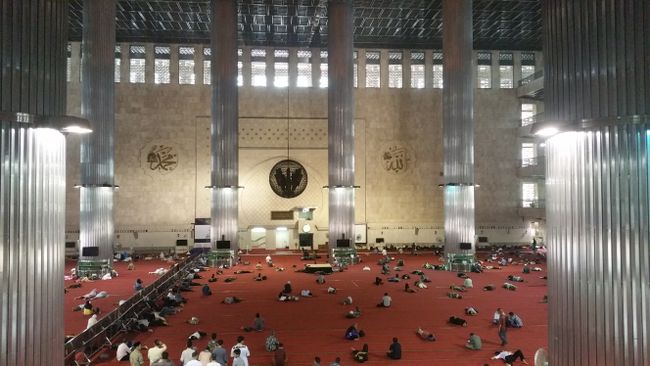
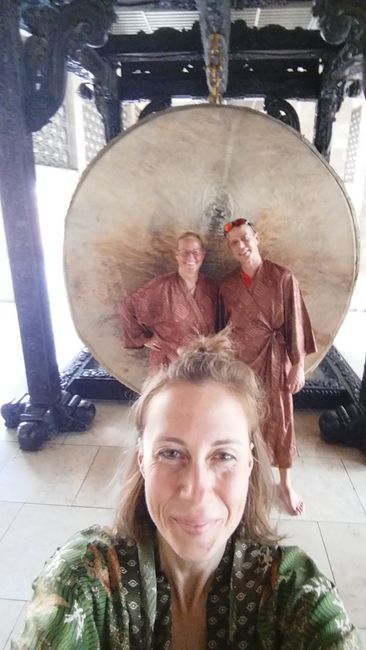
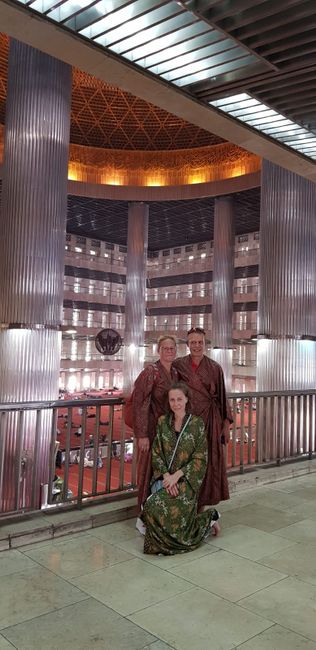
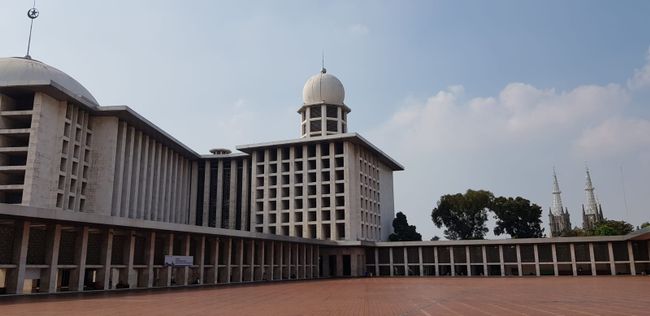
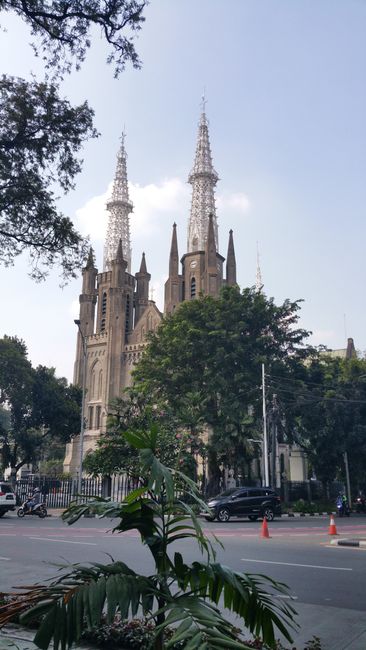
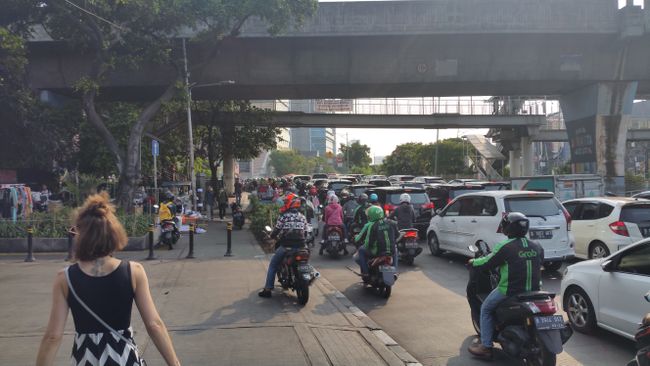
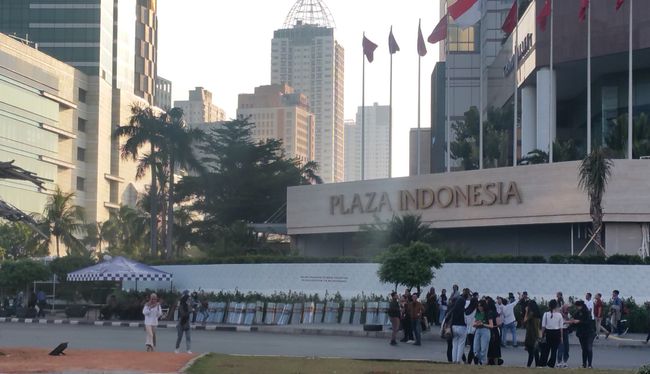
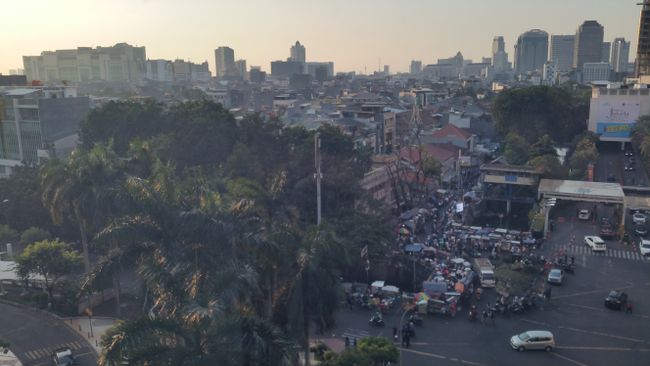
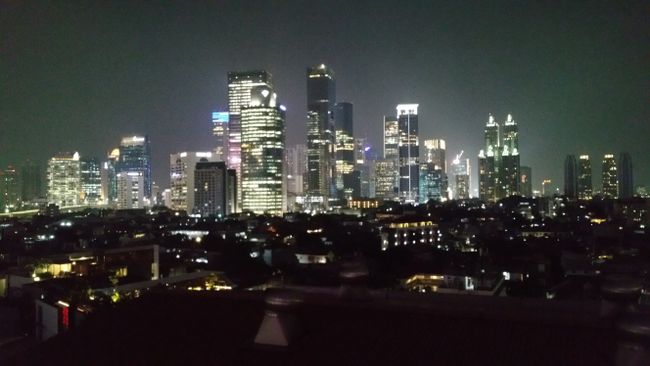
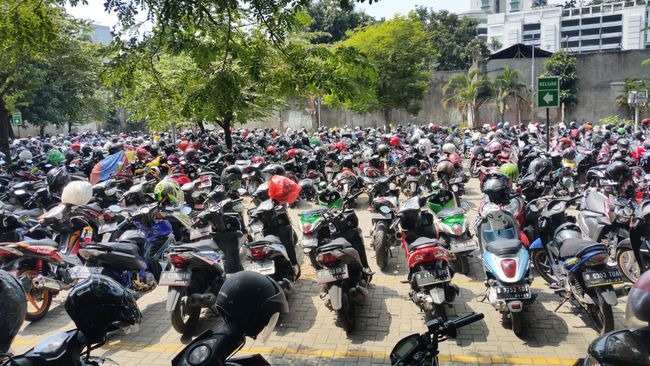
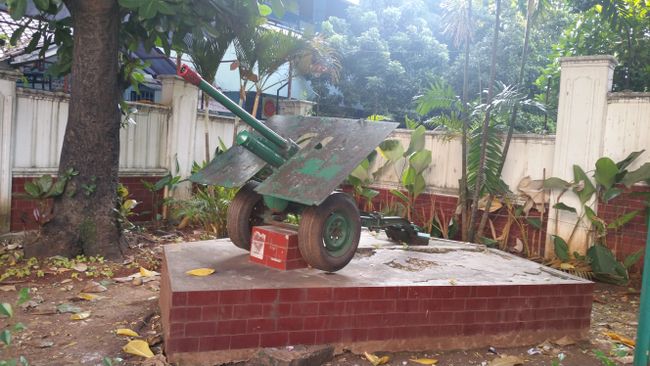
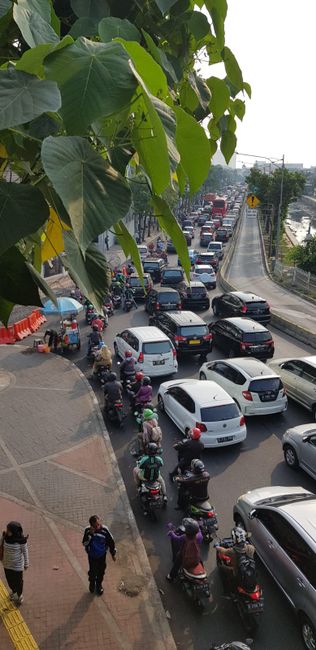
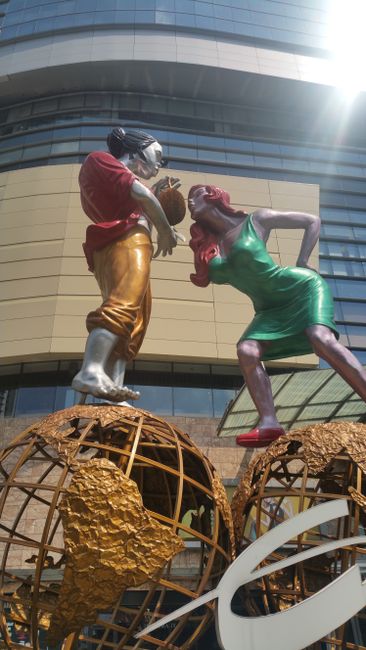
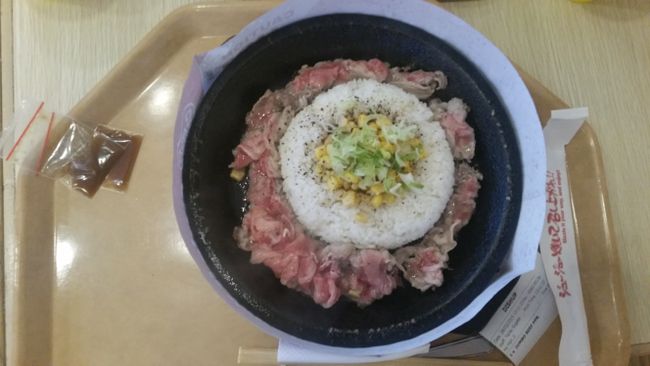
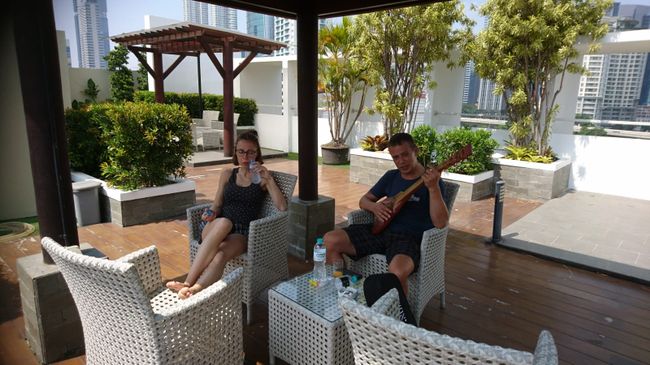
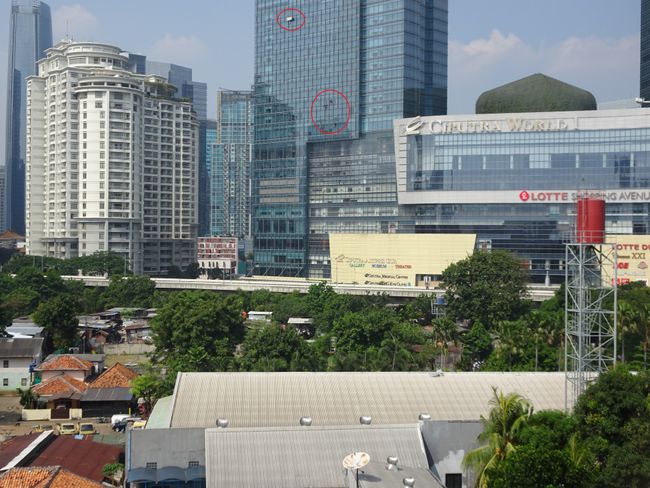
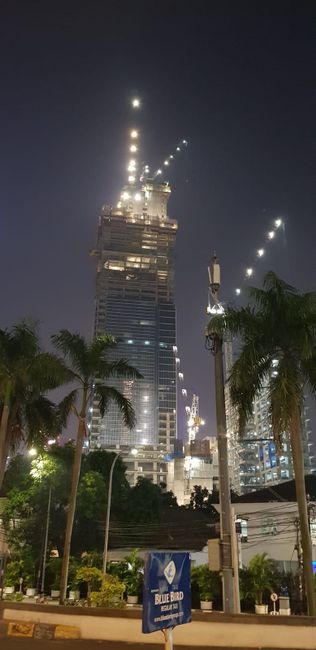
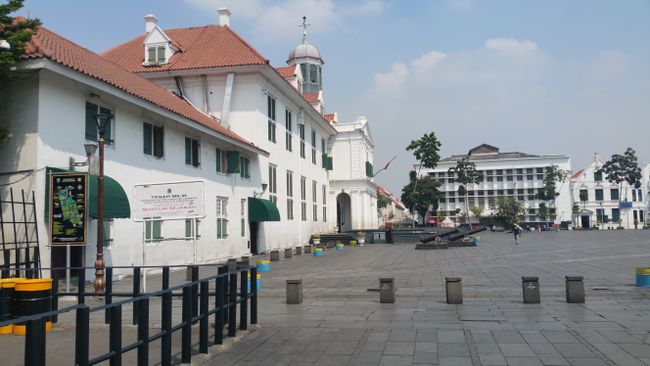
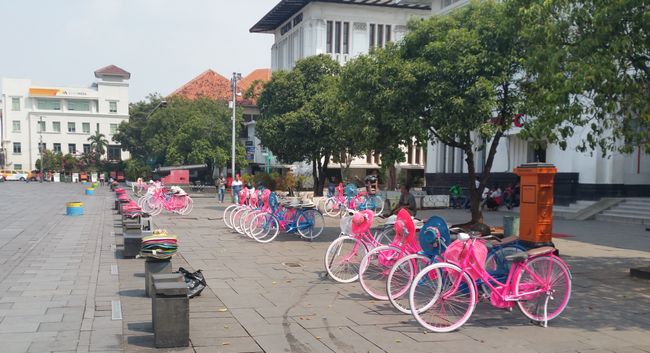
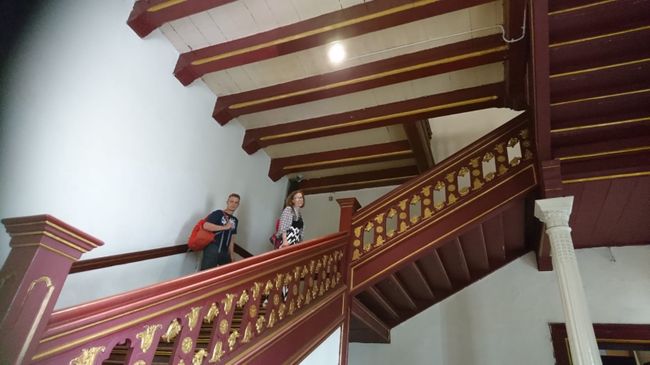
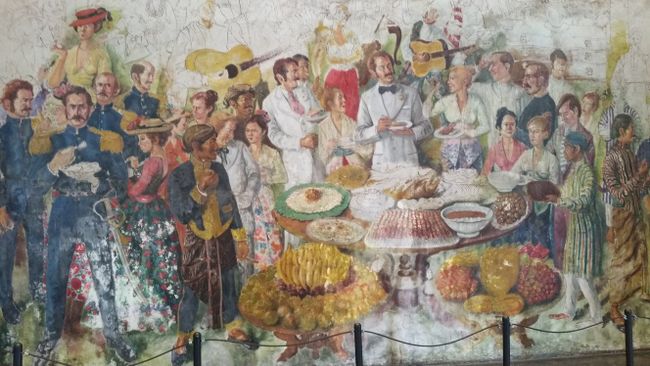
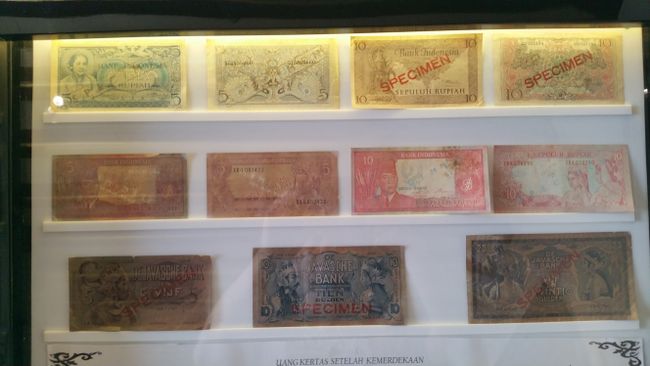
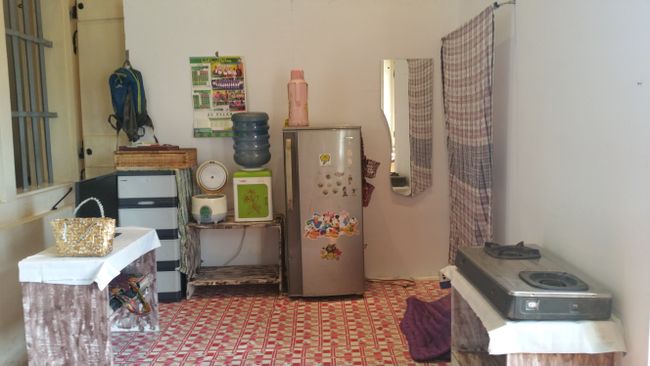
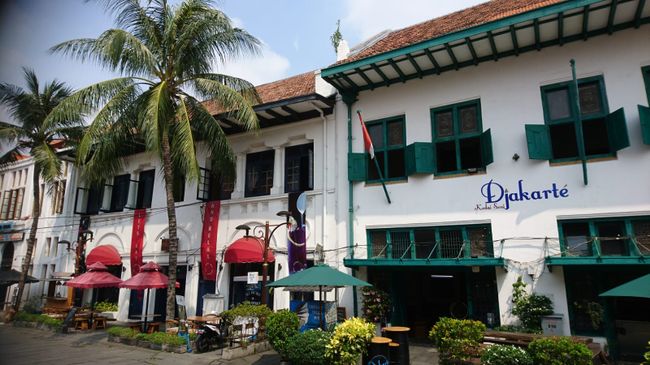
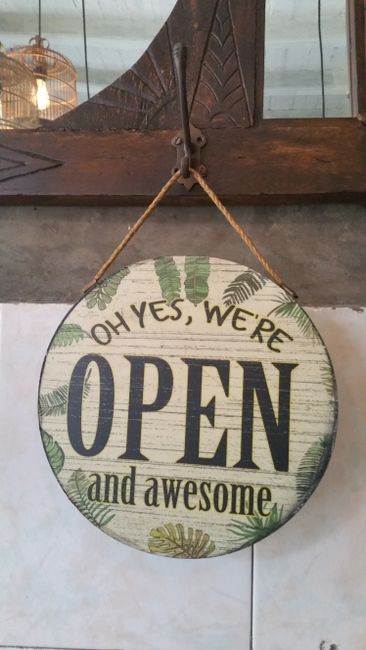
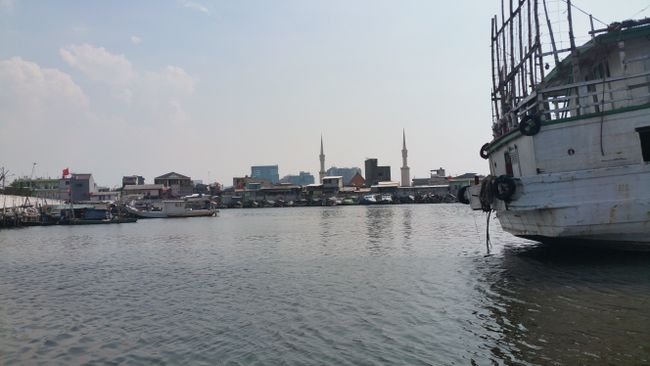
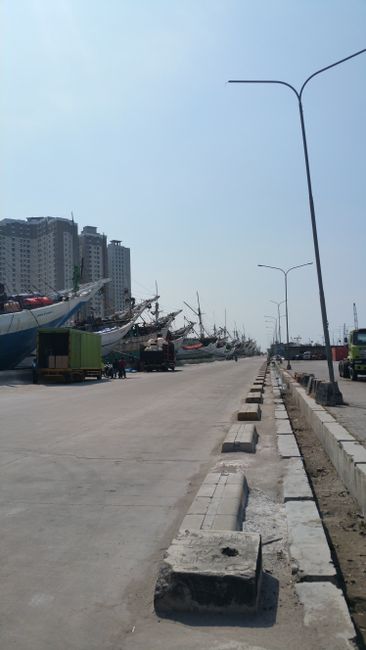
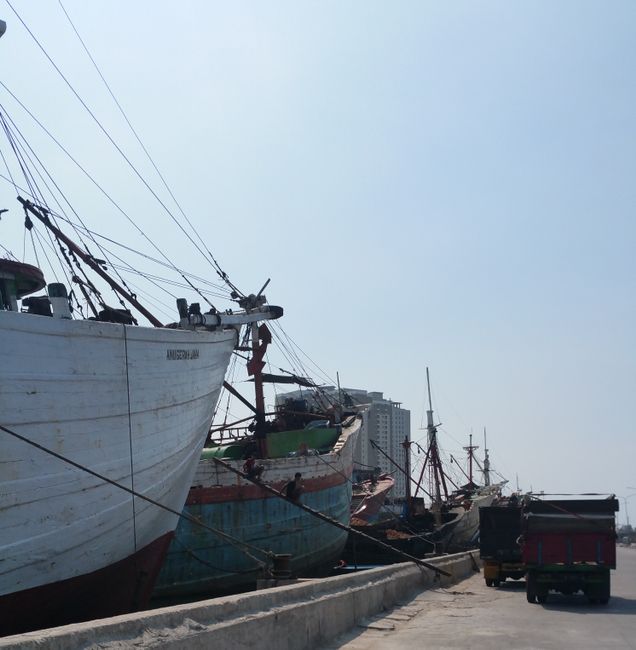
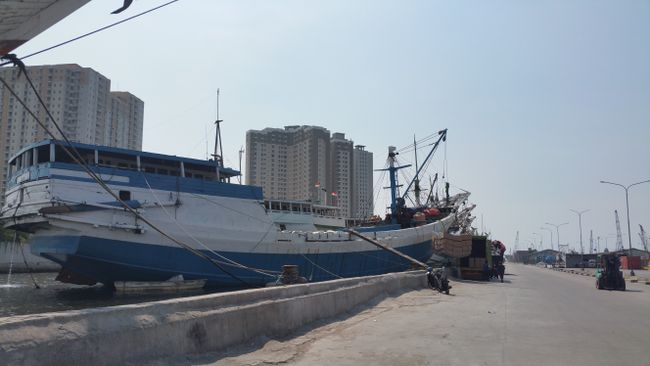
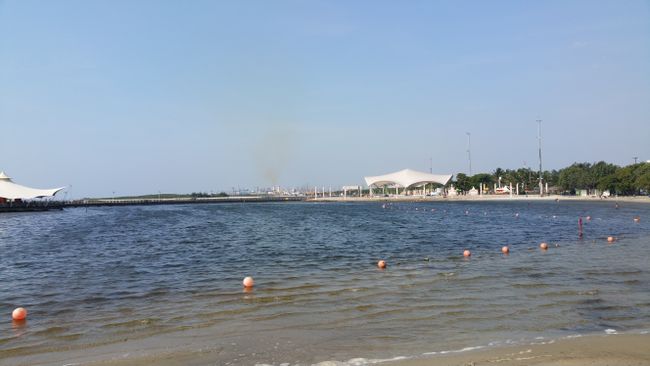
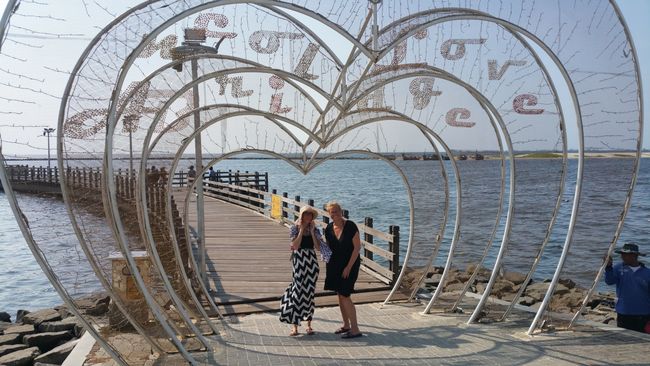
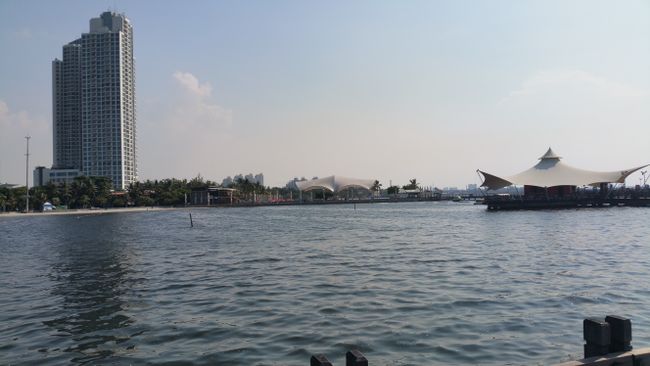
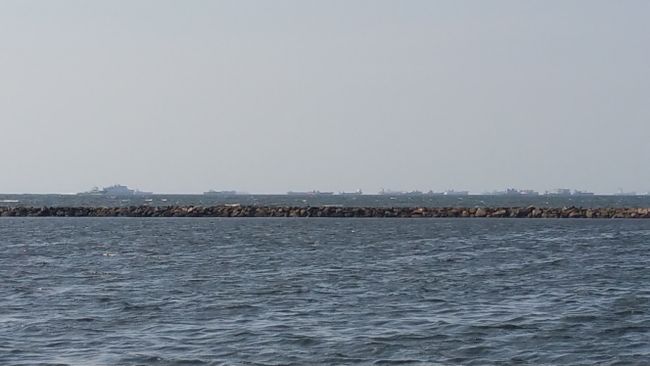
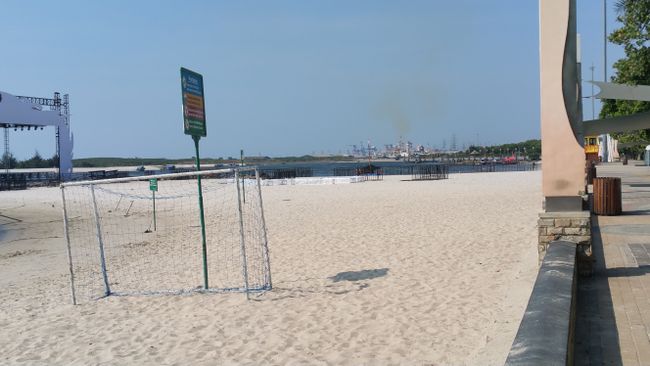
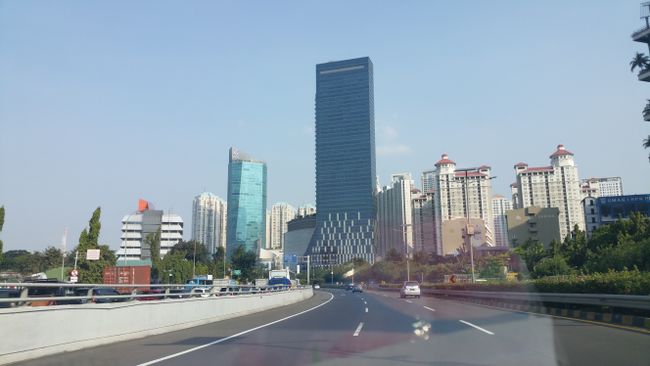
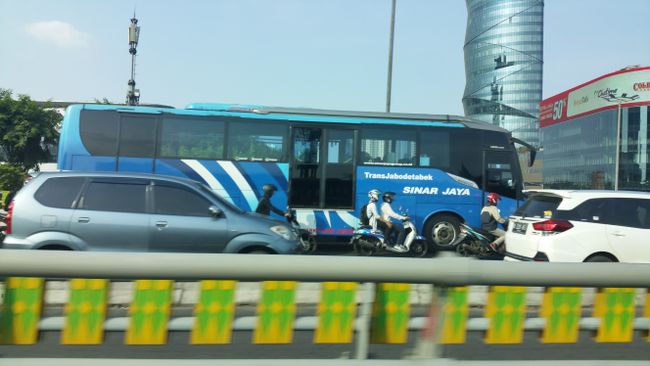
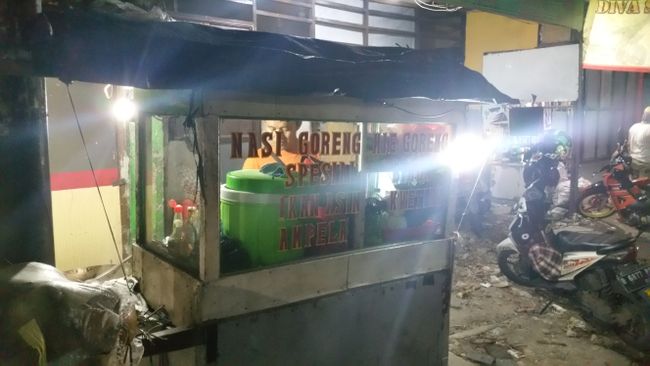
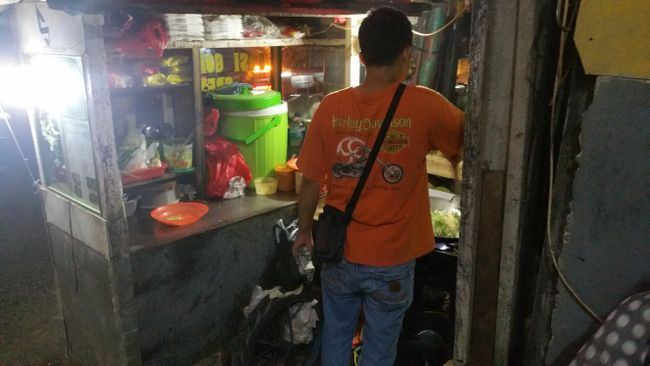
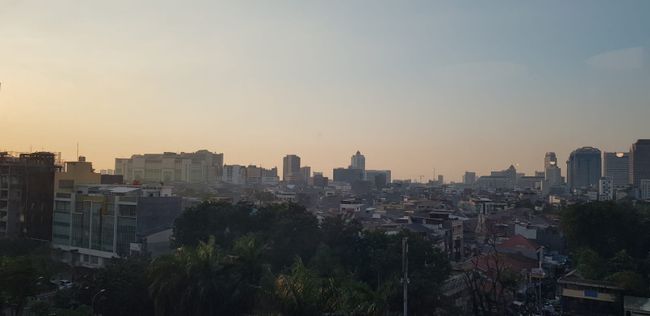
Pretplatite se na Newsletter
Twenty minutes before the planned time, we land the next day full of anticipation at 7:45 am at Soekarno Hatta Airport in Jakarta. Today, our travel group gets a new addition as my cousin Anne comes over from Munich to join us. Her plane is supposed to land at the same time, so we should meet somewhere at the baggage belts at the latest. That's the theory. Thanks to our seats in the first row, we are one of the first at immigration and in the baggage claim area. There is a bit of confusion because there is no machine from Doha on the display boards. Do they have a delay? Far from it. Thanks to Wi-Fi and WhatsApp, we quickly find out what happened. Anne's plane landed at a completely different terminal, apparently the airport is bigger than we thought. We decide to charter a taxi and ten minutes later, we are together.
After getting money and buying SIM cards, we ask at an information counter for transportation to the city. As luck would have it, the same driver who transported us from terminal to terminal is ready and waiting. We didn't even need to unload. The journey to the hotel takes more than an hour due to various traffic jams. The supposed three-lane highways have turned into five-lane roads, and the lines on the road are purely decorative. This is due to the incredibly dense traffic and several temporary road closures. Jakarta has seen large demonstrations in the past few days, some of which ended violently. The losing faction in the recent presidential elections accuses the winners of manipulation and is now mobilizing their supporters. The police have significantly increased their presence and closed some areas to traffic. This naturally has an impact on the city, which is constantly on the verge of a traffic jam.
We are staying at the 'Ayaka Suites' hotel for three nights. The area is not particularly touristy, but there are several street food stalls and supermarkets nearby. We don't have a plan for our time in the Indonesian capital, so we meet on the rooftop terrace to discuss. The decision is to go into the city, so we take a taxi to Gambir station. From there, we plan to continue to Bandung in three days. It wouldn't hurt to have some local knowledge beforehand. There is also a small problem with the seats for our journey from Bandung to Yogyakarta, which we might be able to solve at the same time. Something went wrong with the booking, and despite booking seats next to each other, we are scattered throughout the carriage. At least that's what the booking confirmation from Tiket.com says.
After printing the boarding passes for the journey from Jakarta to Bandung at a machine, we find a service counter where a friendly staff member listens to our request. He is willing to help but sadly shakes his head after checking the computer. Everything is sold out, so it's not possible to change seats. Oh well, we'll have to sort it out ourselves on the train.
Just like in the hotel earlier, we are once again aimlessly standing outside the train station. Fortunately, we realize that just around the corner, a few hundred meters away, is the city forest with the National Monument. We can cross off a cultural point of interest from our list. Of course, Mondays are cleaning days, and the gate remains closed. Okay, we'll just take photos from the outside. A small, older man who looks like he has no teeth approaches us. He works here as a guide, and since it's his day off, he has nothing to do. He asks if we would like to accompany him to the Istiqlal Mosque next door. Sure, why not. None of us has ever been inside a mosque, and if it's the largest one in Southeast Asia, it's hard to refuse. Herman, as our guide introduces himself, dresses us up before entering. He has brought three robe-like garments from somewhere and helps us put them on. Then we leave our shoes at the wardrobe (insiders just leave them on the stairs in front of the door), and finally, we can enter the interior. Our guide tells us a lot about the technical details of the mosque, Islam in general, and Ramadan in particular. During the two highest holidays, over 300,000 people are said to gather here, with 120,000 alone inside the mosque. I'd rather not be there. We pose for a few photos in front of the allegedly world's largest drum. After the tour inside, we finally take off the robes. It was a great idea, especially since some of us were quite sweaty. We take a few steps through a garden-like area in front of the mosque, where Herman shows us some spots for photography. Then he declares the tour over and naturally expects payment. Interrupted by constant 'I'm sorry's,' he recites his price and his self-invented exchange rate. It's actually more than I imagined, but in the end, not so much more that it was worth arguing. We should probably get into the habit of asking the price beforehand.
After saying goodbye, we feel lost again. So we just walk aimlessly until we reach Juanda Train Station. There we study our map again, which, although already quite large, is printed so tiny that it's hard to decipher anything. Our next destination is Grand Indonesia Plaza. We take the S-Bahn for 3 stops to Cikini. From there, it's about a 25-minute walk. Unfortunately, the S-Bahn network is a bit undersized for the huge city. Nevertheless, we're glad it exists at all. The city is too massive to explore on foot, and taxis only move from one traffic jam to another. Alternatively, there are the Transjakarta buses with their mid-level boarding. But first, you have to figure out the route network. It's not worth it for just three days. The Grab and Gojek scooter-taxis are fast but can only transport one person at a time.
We hardly encounter any locals on the sidewalks during our stroll. Only a few on mopeds trying to bypass the traffic jam. Jakarta is not made for pedestrians. If there are sidewalks, they are usually in miserable condition. Crossing the streets can be a challenge. You have to navigate through the traffic with determination. At many pedestrian traffic lights, there are even uniformed personnel who hold back the vehicles when the light is red to ensure safe passage. However, I recommend always keeping an eye on the road.
The area around Grand Indonesia Mall is full of police. Young people in uniform lie in the shade of the transport vehicles, and you have to be careful not to stumble over them. On the other side of the street, there is a long row of plexiglass shields and bamboo sticks. It's better to avoid this area later.
After some shopping and a delicious meal, we want to return to the hotel later. There is a taxi stand with a waiting area at the mall exit, where a few people are already standing. We join the line and wait for about 10 minutes. But during that time, no taxis come. We decide to try our luck elsewhere. Diagonally across the street is another mall with a similar taxi stand. But here, you have to take a number. We pull number 466. The display shows that the next number to be called is 395. Are they kidding us? A full 40 minutes later, the display has been stuck on 402 for a while. We give up. It would be almost an hour's walk. So we go back to Grand Indonesia Mall and join the queue again. We don't see any familiar faces from before, so it seems to be moving faster. But we still wait another 30 minutes until a Blue Bird taxi finally comes for us. Even though we're in a taxi, we still don't reach the hotel much faster than if we had walked.
The next day, we avoid the city except for a small area around our hotel. We want to book a tour for the day after, and there is supposed to be an agency in Ambassador Mall nearby. With some difficulty, we find it. However, they don't seem to be set up for day visitors, especially not ones from afar. It takes a while for them to reach someone on the phone who offers something suitable. They promise to call us back. While the girls wait, I take the opportunity to get my hair cut at the barber shop next door. For a little less than €4.40, I also get a head and neck massage. Not bad at all. Unfortunately, all the tours are fully booked, so we leave empty-handed in that regard. Given the extreme heat, we only walk a few hundred meters to the modern Lotte Mall and spend the time until the afternoon in the air-conditioned shopping temple.
Back at the hotel, we finally arrange another outing for the next day before retreating to the rooftop terrace and finally doing something for our ukulele playing. We haven't had a chance to practice in the past few days. After a short return visit to Lotte, I have a delicious Mie Goreng from the Warung next to the hotel. In the meantime, the girls either skip dinner or stick to the krupuk chips that come with my noodles.
Our driver is ready at 10:00 am the next morning. For about €50, we can be driven around the city for 12 hours. Unfortunately, Arman speaks very little English, so our communication is limited. We have him take us directly to Kota Tua, the old Dutch quarter. The colonial architecture provides a pleasant contrast to the numerous skyscrapers in the city center. At the Sejarah Museum, we get an interesting insight into the history of Batavia, as the Dutch called the city back then, before indulging in a nice lunch at a small restaurant.
Afterwards, we drive to the old Sunda Kelapa port, where large, rickety wooden boats are still unloaded in the traditional way using ship cranes and manual labor. The final stop is Ancol Beach, a public beach in the middle of a huge amusement park. Although we brought our swimwear, we decide not to go for a swim when we see that the locals are fully clothed, some even wearing jeans, in the water. We don't want to attract attention, so we just stroll along the promenade. It's already afternoon by now. Exhausted from the heat, we have Arman drive us directly back to the hotel. It takes over an hour to cover the 13 km, but that seems to be normal.
In the evening, Anne and I enjoy some street food. We sit on the rooftop terrace and endure the loud continuous sound of the surrounding mosques. The end of Ramadan is approaching, so the muezzins make an extra effort. Even the hotel staff is particularly picky today. When I order two bottles of beer at the counter on the ground floor, something that was no problem in the past two days, I am told that beer is only served in glasses. Apparently, no one should know what's in them. Furthermore, the person behind the bar insists on bringing the drinks to the roof themselves, so we take the elevator together. Well, different countries, different customs.
We are somewhat glad that we will travel to Bandung tomorrow. Jakarta can really overwhelm you. It's noisy, hot, and simply oppressive at times. Of all the Asian cities we have visited so far, it's one that we don't necessarily have to visit again. Sure, the people are nice, but the city itself is rather unsympathetic.
Pretplatite se na Newsletter
Odgovor
